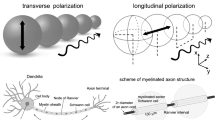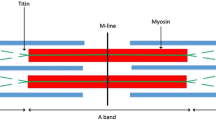Abstract
An increased extracellular K+ concentration ([K+]0) is thought to cause muscle fatigue. We studied the effects of increasing [K+]0 from 4 mM to 8–14 mM on tetanic contractions in isolated bundles of fibres and whole soleus muscles from the rat. Whereas there was little depression of force at a [K+]0 of 8–9 mM, a further small increase in [K+]0 to 11–14 mM resulted in a large reduction of force. Tetanus depression at 11 mM [K+]o was increased when using weaker stimulation pulses and decreased with stronger pulses. Whereas the tetanic force/resting membrane potential (E M) relation showed only moderate force depression with depolarization from −74 to −62 mV, a large reduction of force occurred whenE M fell to −53 mV. The implications of these relations to fatigue are discussed. Partial inhibition of the Na+-K+ pump with ouabain (10−6 M) caused additional force loss at 11 mM [K+]0. Salbutamol, insulin, or calcitonin gene-related peptide all stimulated the Na+-K+ pump in muscles exposed to 11 mM [K+ 0] and induced an average 26–33% recovery of tetanic force. When using stimulation pulses of 0.1 ms, instead of the standard 1.0-ms pulses, force recovery with these agents was 41–44% which was significantly greater (P < 0.025). Only salbutamol caused any recovery ofE M (1.3 mV). The observations suggest that the increased Na+ concentration difference across the sarcolemma, following Na+-K+ pump stimulation, has an important role in restoring excitability and force.
Similar content being viewed by others
References
Andersen SLV, Clausen T (1993) Calcitonin gene-related peptide stimulates active Na+-K+ transport in rat soleus muscle. Am J Physiol 264: C419-C429
Ballanyi K, Grafe P (1988) Changes in intracellular ion activities induced by adrenaline in human and rat skeletal muscle. Pflügers Arch 411:283–288
Bowman WC, Raper C (1964) The effects of adrenaline and other drugs affecting carbohydrate metabolism on contraction of the rat diaphragm. Br J Pharmacol 23:184–200
Cairns SP, Dulhunty AF (1993)β-Adrenergic potentiation of E-C coupling increases force in rat skeletal muscle. Muscle Nerve 16:1317–1325
Chua M, Dulhunty AF (1988) Inactivation of excitation-contraction coupling in rat extensor digitorum longus and soleus muscles. J Gen Physiol 91:737–757
Clausen T, Everts ME (1991) K+-Induced inhibition of contractile force in rat skeletal muscle: role of active Na+-K+ transport. Am J Physiol 261:C799-C807
Clausen T, Flatman JA (1987) Effects of insulin and epinephrine on Na+-K+ and glucose transport in soleus muscle. Am J Physiol 252:E492-E499
Clausen T, Andersen SLV, Flatman JA (1993) Na+-K+ pump stimulation elicits recovery of contractility in K+-paralysed rat muscle. J Physiol (Lond) 472:521–536
Craig JW, Rall TW, Larner J (1969) The influence of insulin and epinephrine on adenosine 3′,5′-phosphate and glycogen transferase in muscle. Biochim Biophys Acta 177:213–219
Engstfeld G, Antoni H, Fleckenstein A, Nast A, Hattingberg MV (1961) Die Restitution der Erregungsfortleitung und Kontraktionskraft des K+-gelähmten Frosch- und Säugetiermyokards durch Adrenalin. Pflügers Arch 273:145–163
Everts ME, Clausen T (1992) Activation of the Na-K pump by intracellular Na in rat slow- and fast-twitch muscle. Acta Physiol Scand 145:353–362
Hnik P, Holas M, Krekule I, Kriz N, Mejsnar J, Smiesko V, Ujec E, Vyskocil F (1976) Work-induced potassium changes in skeletal muscle and effluent venous blood assessed by liquid ion-exchanger microelectrodes. Pflügers Arch 362:85–94
Holmberg E, Waldeck B (1980) The effect of insulin on skeletal muscle contractions and its relation to the effect produced byβ-adrenoceptor stimulation. Acta Physiol Scand 109: 225–229
Jones DA (1981) Muscle fatigue due to changes beyond the neuromuscular junction. In: Porter R, Whelan J (eds) Human muscle fatigue: physiological mechanisms (Ciba Foundation Symposium 82). Pitman Medical, London, pp 178–192
Juel C (1986) Potassium and sodium shifts during in vitro isometric muscle contraction, and the time course of the ion-gradient recovery. Pflügers Arch 406:458–463
Juel C (1988) Muscle action potential propagation velocity changes during activity. Muscle Nerve 11:714–719
Juel C (1988) The effect ofβ 2-adrenoceptor activation on ion-shifts and fatigue in mouse soleus muscles stimulatedin vitro. Acta Physiol Scand 134:209–216
Lännergren J, Westerblad H (1986) Force and membrane potential during and after fatiguing, continuous high-frequency stimulation of singleXenopus muscle fibres. Acta Physiol Scand 128:359–368
Lindinger MI, Heigenhauser GJF (1991) The roles of ion fluxes in skeletal muscle fatigue. Can J Physiol Pharmacol 69:246–253
McArdle JJ, D'Alonzo AJ (1981) Effects of terbutaline, a β2-adrenergic agonist, on the membrane potentials of innervated and denervated fast- and slow-twitch muscles. Exp Neurol 71: 134–143
Medbø JI, Sejersted OM (1990) Plasma potassium changes with high intensity exercise. J Physiol (Lond) 421:105–122
Nakajima S, Nakajima Y, Bastian J (1975) Effects of sudden changes in external sodium concentration on twitch tension in isolated muscle fibers. J Gen Physiol 65:459–482
Nastuk WL, Hodgkin AL (1950) The electrical activity of single muscle fibers. J Cell Comp Physiol 35:39–73
Nørgaard A, Kjeldsen K, Clausen T (1981) Potassium depletion decreases the number of3H-ouabain binding sites and the active Na, K-transport in skeletal muscle. Nature 293:739–741
Renaud JM, Light P (1992) Effects of K+ on the twitch and tetanic contraction in the sartorius muscle of the frog,Rana pipiens. Implication for fatiguein vivo. Can J Physiol Pharmacol 70:1236–1246
Ruff RL, Simoncini L, Stühmer W (1987) Comparison between slow sodium channel inactivation in rat slow- and fast-twitch muscle. J Physiol (Lond) 383:339–348
Sejersted OM (1992) Electrolyte imbalance in body fluids as a mechanism of fatigue during exercise. In: Lamb DR, Gisolfi CV (eds) Perspectives in exercise science and sports medicine vol 5., Brown and Benchmark, Dubuque, IA, pp 149–206
Sjøgaard G, Adams RP, Saltin B (1985) Water and ion shifts in skeletal muscle of humans with intense dynamic knee extension. Am J Physiol 248:R190-R196
Tomita T (1975) Action of catecholamines on skeletal muscle. In: Blaschko H, Sayers G, Smith AD (eds) Handbook of physiology, section 7. Endocrinology, part VI, adrenal gland. American Physiological Society. Williams and Williams, Baltimore, Md., pp 537–552
Wang P, Clausen T (1976) Treatment of attacks in hyper-kalaemic familial periodic paralysis by inhalation of salbutamol. Lancet i:221–223
Author information
Authors and Affiliations
Rights and permissions
About this article
Cite this article
Cairns, S.P., Flatman, J.A. & Clausen, T. Relation between extracellular [K+], membrane potential and contraction in rat soleus muscle: modulation by the Na+-K+ pump. Pflugers Arch. 430, 909–915 (1995). https://doi.org/10.1007/BF01837404
Received:
Revised:
Accepted:
Issue Date:
DOI: https://doi.org/10.1007/BF01837404




